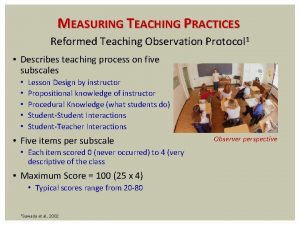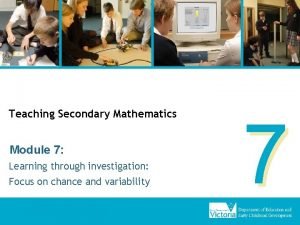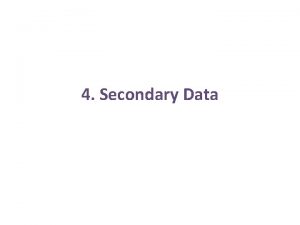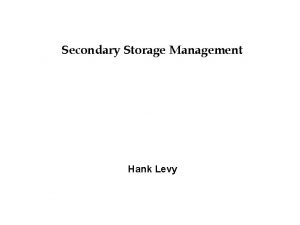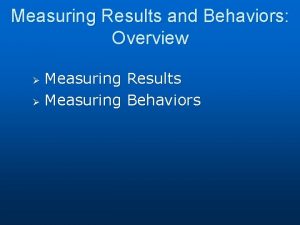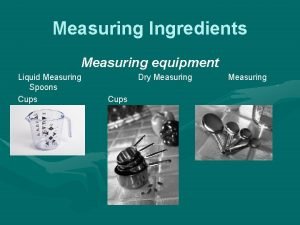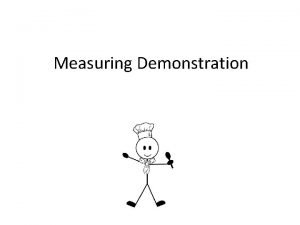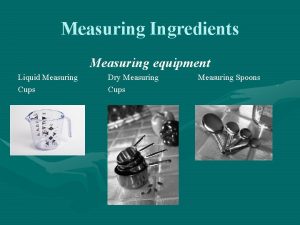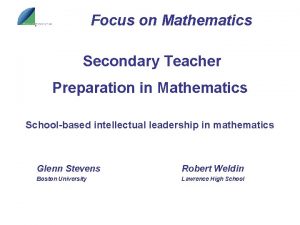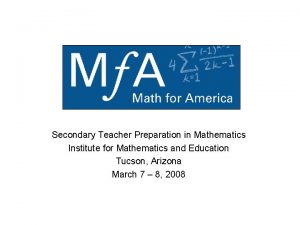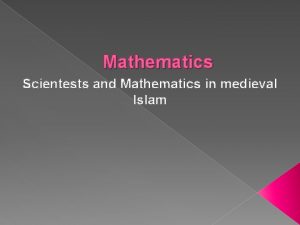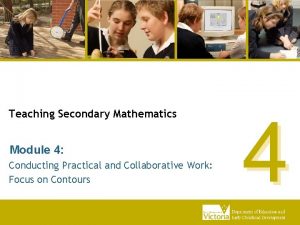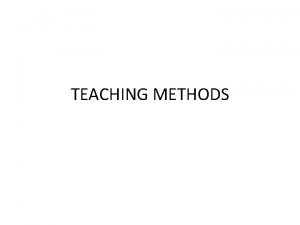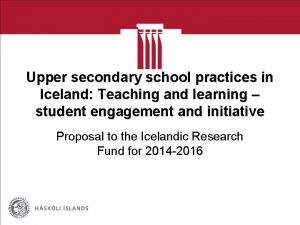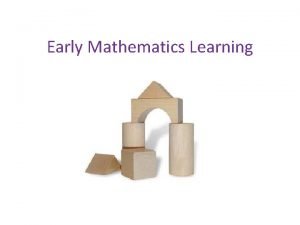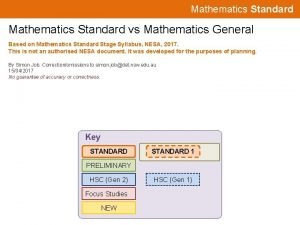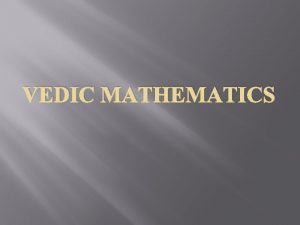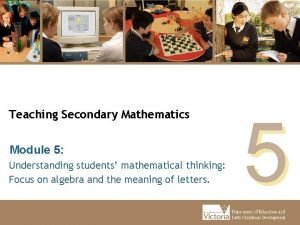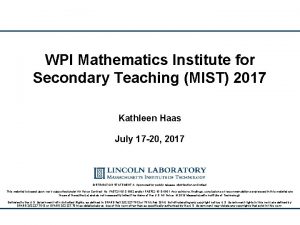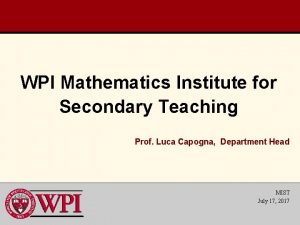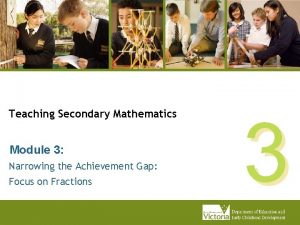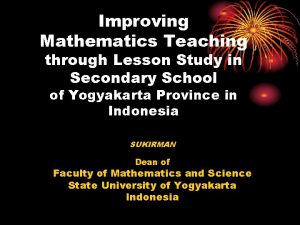Teaching and Learning Practices in Secondary Mathematics measuring



































- Slides: 35

Teaching and Learning Practices in Secondary Mathematics: measuring teaching from teachers’ and students’ perspective Maria Pampaka, Lawrence Wo, Afroditi Kalambouka, Sophina Qasim & David Swanson 6 th September 2012 BERA, Manchester

The project: Te. Le. Pri. SM Teaching and Learning Practices in Secondary Mathematics “Mathematics teaching and learning in secondary schools: the impact of pedagogical practices on important learning outcomes” (ESRC: RES-061 -25 -0538) (2011 -2014) Te. Le. Pri. SM

Motivation …Previous results The STEM issue • STEM: Science Technology, Engineering and Mathematics • Participation remains problematic • Students dispositions are declining Te. Le. Pri. SM

Negative effect of transmissionist pedagogy at AS and A Level on students maths dispositions Te. Le. Pri. SM

Common Trends from UK and Norway (Trans. Maths) Transmissionist teaching at school (pre-uni) is associated with lower confidence and maths dispositions Smaller effect as students progress in HE – but still significant dispositions Te. Le. Pri. SM

Outline • • Project overall description & aims Methods Analysis –some results Emerging conclusions Te. Le. Pri. SM

Te. Le. Pri. SM Aim: To map secondary students’ learning outcomes and choices, including dispositions and attitudes, together with the teaching they are exposed to. Surveys for students from Years 7 to 11 (3 times) and also for their mathematics teacher (twice). Case studies in a small number of schools with lesson observations and interviews with students and teachers. Te. Le. Pri. SM

Particular Aims (i) to understand how learners’ dispositions to study Mathematics develop through Secondary School (i. e. KS 3 and KS 4) (ii) to understand how mathematics pedagogies vary across different situations and contexts, (iii) to understand how different pedagogies, programmes and school contexts influence learning outcomes, including dispositions, and (iv) to solve a series of measurement and analytical challenges involving a synthesis of longitudinal and cross-sectional analyses, and dealing with missing data. Te. Le. Pri. SM

Aims Today • How are we measuring teaching practices in secondary mathematics? • From students’ and teachers’ point of view • Agreement between the two? • Differences between Year Groups? • How are these ‘measures’ of pedagogy associated with other variables (students’ dispositions) Te. Le. Pri. SM

The Teleprism survey design Te. Le. Pri. SM

Participating schools Students Te. Le. Pri. SM

Analytical/Methodological Framework Te. Le. Pri. SM

The Student Survey Development Different Sections: • Background Information • Attitudes/Dispositions to Maths • Aspirations/Future Choices • Perception of Maths Teaching • Maths Self-efficacy (confidence) Build on previous (Trans. Maths) surveys and broader relevant literature Te. Le. Pri. SM

Capturing what’s happening during maths lessons Te. Le. Pri. SM

How is maths taught this year? 26 items Te. Le. Pri. SM

The teacher instrument 30 items Te. Le. Pri. SM

Measures Validation Te. Le. Pri. SM

Measurement Methodology ‘Theoretically’: Rasch Analysis – Partial Credit Model – Rating Scale Model ‘In practice’ – the tools: – FACETS, Quest and Winsteps software Interpreting Results: – Fit Statistics (to ensure unidimensional measures) – Differential Item Functioning for ‘subject’ groups – Person-Item maps for hierarchy Te. Le. Pri. SM

Before the Rasch Model Te. Le. Pri. SM

After: The Rasch Item-Map Hierarchy… Te. Le. Pri. SM

During the process… Item fit statistics Te. Le. Pri. SM

Differential Item Functioning across Year Groups 22: We use calculators 16: We do projects that include other school subjects 21: We get assignments to research topics on our own Te. Le. Pri. SM

Some evidence for differences in interview data: Student: In younger years, like Year 8 and 9, maybe Year 7 I can’t really remember, we used to go in the computer room there but we used to do maths on the computer, but then not anymore. Te. Le. Pri. SM

The Rasch Item-Map Hierarchy… Te. Le. Pri. SM

Agreement between teachers and students scores (? ) • • Matched dataset at class-teacher level Data from 128 teachers 264 classrooms Average student score (compromise!) Correlation 0. 2 (but stat significant) • Still to explore with multi-level analysis Te. Le. Pri. SM

Further analysis Descriptive Te. Le. Pri. SM

The picture… Te. Le. Pri. SM

Student-level data: By Year Group Te. Le. Pri. SM

Year Group – Gender Te. Le. Pri. SM

Are some practices more engaging? In other words: • association of the measure of pedagogy perception with variables relevant to students’ mathematics dispositions Te. Le. Pri. SM

Students’ favourite and least favourite topics Te. Le. Pri. SM

Pedagogy by ‘preference’ Te. Le. Pri. SM

Limitations and further work § Tentative preliminary analysis § Validation should be complemented with qualitative data from interviews with students and teachers (see Qasim et. Al, BERA 2012) § Some of the resulting associations may be masked by interactions with other variables (further tested with generalised linear models) § Multilevel modelling will also be pursuit to deal with the hierarchical structure of the data Te. Le. Pri. SM

Concluding Points – From press release Twenty-first century maths lessons in English secondary schools are generally much like those of decades ago, with the teacher standing at the front of the class asking questions and opportunities for pupils to relate the subject to their real lives relatively sparse. And the GCSE exams system seems to underscore this position, with lessons becoming increasingly routine and less interactive as pupils get older and approach the end of their compulsory schooling careers. This may be a factor in maths ranking as the subject secondary pupils are most likely to say they dislike, although it also has among the highest number of pupils naming it as their preferred choice. Te. Le. Pri. SM

Is there a common ground for teaching for good results (exams) and engaging students in maths? Thank you! www. teleprism. com Te. Le. Pri. SM
 Specific objectives of teaching mathematics
Specific objectives of teaching mathematics Direct instruction
Direct instruction Learning intentions and success criteria for mathematics
Learning intentions and success criteria for mathematics Micro teaching meaning
Micro teaching meaning Cuadro comparativo e-learning y b-learning
Cuadro comparativo e-learning y b-learning Virginia kindergarten standards
Virginia kindergarten standards Establish mathematics goals to focus learning
Establish mathematics goals to focus learning Contextualized learning
Contextualized learning 2016 algebra 1 sol
2016 algebra 1 sol 2016 mathematics standards of learning
2016 mathematics standards of learning Aims and objectives of economics
Aims and objectives of economics Appetitive faculties
Appetitive faculties New jersey center for teaching and learning
New jersey center for teaching and learning How many total squares are there
How many total squares are there Guiding principles of mtb-mle
Guiding principles of mtb-mle Lausd teacher framework
Lausd teacher framework Assessment the bridge between teaching and learning
Assessment the bridge between teaching and learning Technical core: teaching and learning
Technical core: teaching and learning Uses of cd and dvd in education
Uses of cd and dvd in education Ib approaches to teaching and learning ppt
Ib approaches to teaching and learning ppt Www.njctl.org answer key
Www.njctl.org answer key 10 steps to independence daily 5
10 steps to independence daily 5 Disadvantage of assure model
Disadvantage of assure model Transparency in learning and teaching
Transparency in learning and teaching Nj center for teaching and learning
Nj center for teaching and learning Contextual teaching and learning
Contextual teaching and learning Learning preferences
Learning preferences Taylor institute for teaching and learning
Taylor institute for teaching and learning Great teaching, inspired learning
Great teaching, inspired learning Development of teaching learning materials
Development of teaching learning materials Peek model for readiness to learn
Peek model for readiness to learn![Creative teaching u0026 learning [open house sit lhi] Creative teaching u0026 learning [open house sit lhi]](data:image/svg+xml,%3Csvg%20xmlns=%22http://www.w3.org/2000/svg%22%20viewBox=%220%200%20200%20200%22%3E%3C/svg%3E) Creative teaching u0026 learning [open house sit lhi]
Creative teaching u0026 learning [open house sit lhi] Inductive and analytical learning
Inductive and analytical learning Analytical learning in machine learning
Analytical learning in machine learning Eager and lazy learning
Eager and lazy learning Deep learning approach and surface learning approach
Deep learning approach and surface learning approach


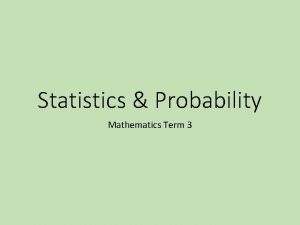


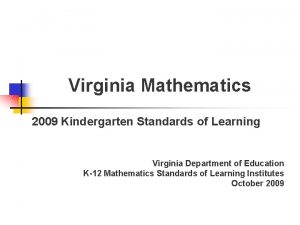
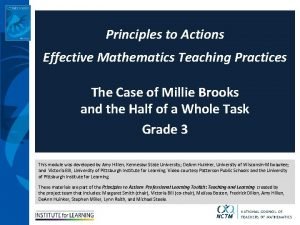
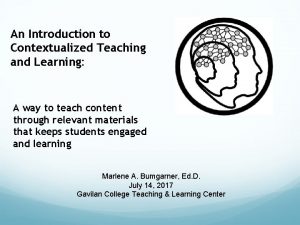
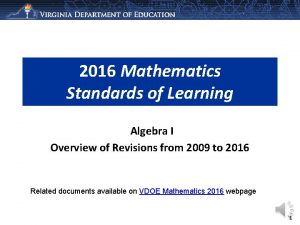
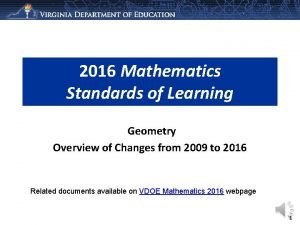

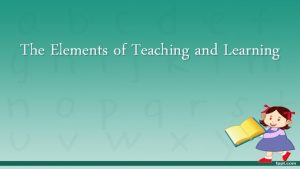
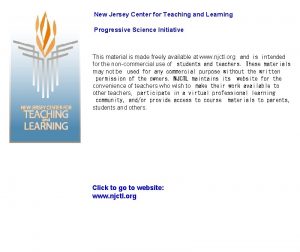
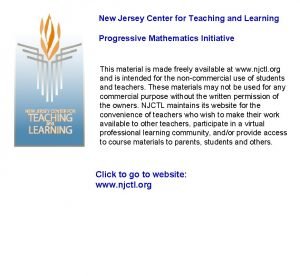
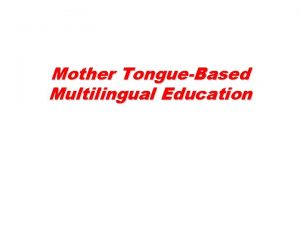
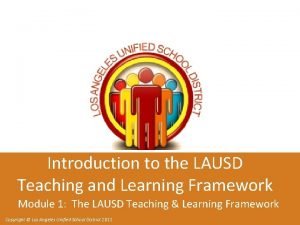
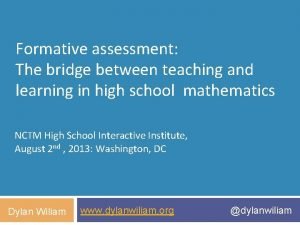
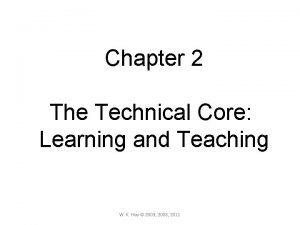
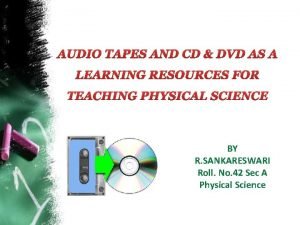
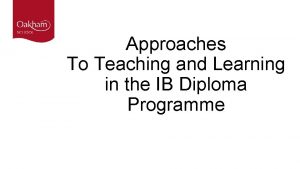
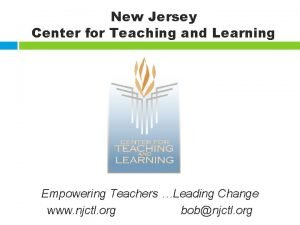
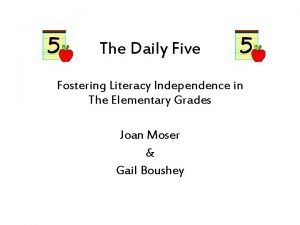

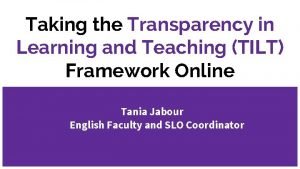
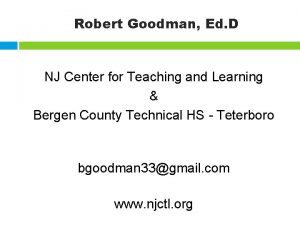
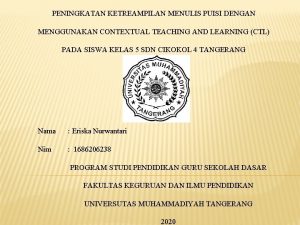
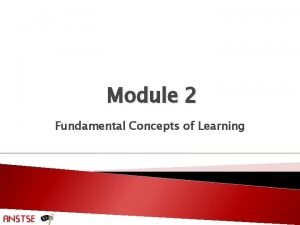
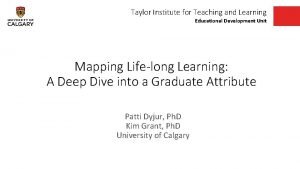
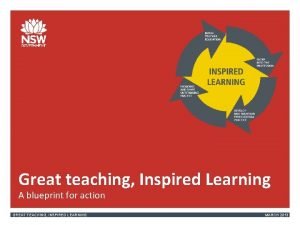
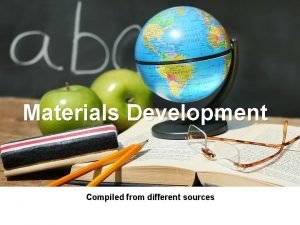
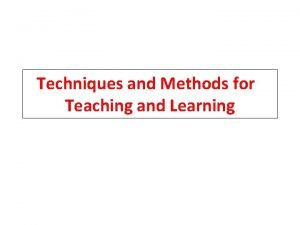
![Creative teaching u0026 learning [open house sit lhi] Creative teaching u0026 learning [open house sit lhi]](https://slidetodoc.com/wp-content/uploads/2020/11/2512431_988e0f6fb16141d8d362e3669c9f87c2-300x225.jpg)




